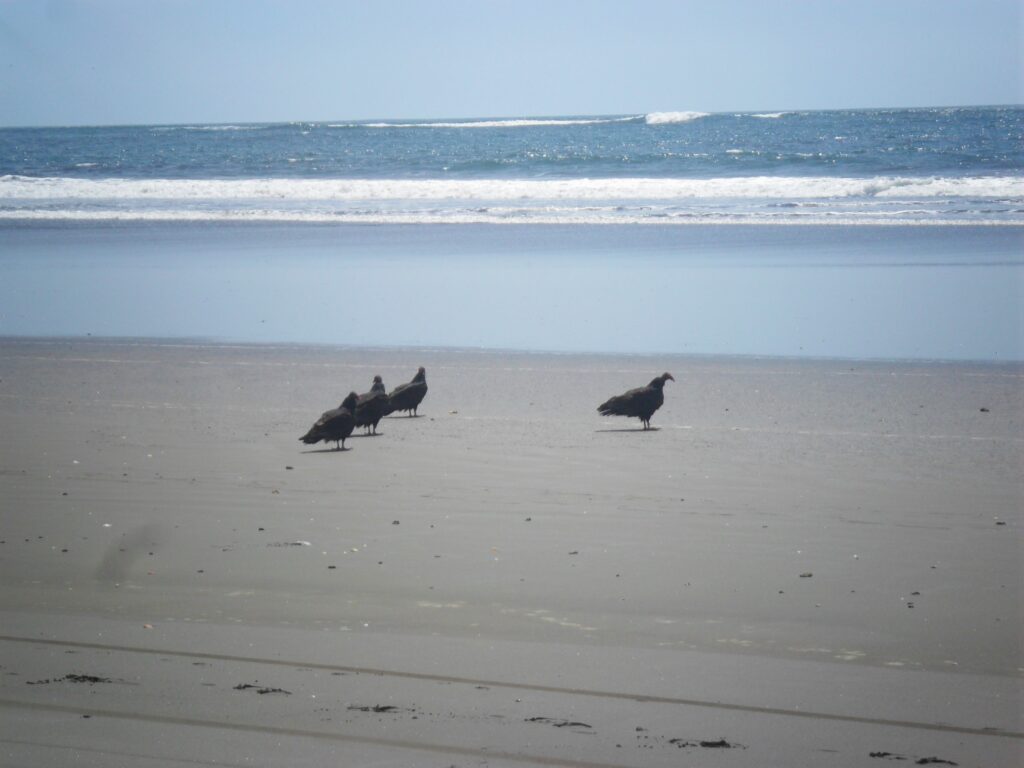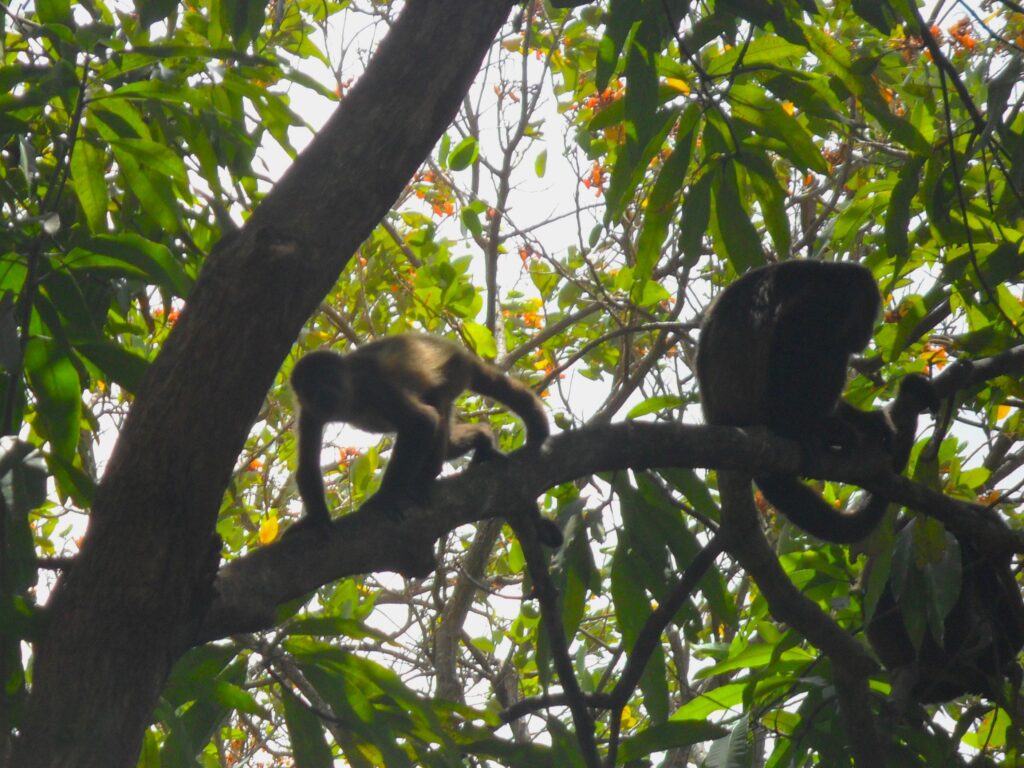Backpacking in Nicaragua
Trouble at the border
Up until now, the crossing between national borders had been completed hassle free. We’d be taken by bus to the border gates, then I simply had to show my passport to get a stamp for (usually) 30 days in the country I was entering. However, my first attempt to enter Nicaragua was a failure, and entirely of my own making.
I had travelled from El Salvador, through the narrow southern stretch of Honduras, to a town on the Honduran border with Nicaragua. I then took a shuttle bus to the border post, as usual. But I had zero money on me. I have no idea why I hadn’t prepared to pay, there had been plenty of opportunities to withdraw cash, and I had paid to cross borders before this one. Nevertheless, I didn’t have the $10 I needed to get into Nicaragua. A man on the Nicaraguan side did offer to pay for me, but only if I were to pay him a further $30 dollars in the first town. I politely declined.
Instead, I had to hitch a free ride from a generous local, on the back of their pickup truck, and return to the town I’d just passed. It was getting late, and all the cash machines were now closed, so in order to secure a stay at a hostel, I handed over my passport as collateral – promising to pay in the morning. I also had to go without food for the night, which wasn’t pleasant. First thing the next morning, with a strong sense of déjà vu, I made the same trip to the border – with $10 on me.

Esteli
I felt I earned a drink at the hostel bar that night, in the city of Esteli. From there, I heard of a hike in Tisey Estanzuela Natural Reserve. The points of interests were a waterfall and a viewpoint atop a hill overlooking the surrounding area. Unfortunately, another mishap was set to befall me there.
The day I visited, a Wednesday, happened to be the only day of the week there wasn’t a bus service through the reserve, that would take visitors to the waterfall or the viewpoint. On my trip so far, my exercise had been mainly limited to walking, albeit with a large backpack. So, I revelled in the opportunity to take on a brisk walk in nature, and I went on foot.

Tisey Estanzuela
A bus from the city took me to the entrance of the reserve. It was five kilometres to the waterfall, and more than double that to the viewpoint. I felt the walk to and from the waterfall – 10km – would be sufficient, particularly in the hot sun.
Through no fault of mine, or through some fault of my own, I missed the sign for the turnoff to the waterfall. I had no device to tell me how far I had walked, nor a smart phone with a GPS signal. I had no idea how far I had gone, so, I kept on walking. And walking. Far beyond the waterfall.
By the time I was certain I missed it, I thought I must be close to the viewpoint – which became my new target. But I had no idea how close I was. Another problem was that I only packed enough water for a five-kilometre walk, and the temperature was around 30 degrees Celsius. It turned out to be fifteen kilometres each way to the viewpoint. But I made it. Hot, sweaty, and tired, I took a well-earned moment to rest and enjoy the panoramic views. I felt a mixture of pride at reaching it, and trepidation about the return journey.
The walk back was a slog. I was close to exhaustion. But I still managed to appreciate the great irony when, on the walk back, I spotted the sign for the waterfall. I summoned the energy to take a quick dip in the pool and cool down, before trudging the five kilometres back to the edge of town.

Jiquilillo
My trip to Jiquilillo, via Chinandega (two of the best place names on the trip), went far more smoothly. Jiquilillo is located on the Pacific Coast, and I stayed at an eco-hostel – Rancho Esperanza –50 metres from the beach. It was a great place to relax and have fun.
It was a wide, golden sand beach – and it was almost entirely devoid of humans. It made a tranquil place for a walk, and it was also a good spot for surfing because of the large waves. I went in for a swim several times and could feel how strong the waves were.
The hostel attracted a motley crew of guests, me included, from different parts of the world. I really enjoyed sitting around in the evenings to discuss all sorts of different topics. With good food and good company, I took a few days to wander, read, and relax, around halfway through my trip.




Leon
My overriding recall of Leon is the heat. Even after several weeks adapting to the Central American climate, it was intense. I struggled to cope when the temperature reached 40 degrees Celsius – which it did, daily. I had managed to keep my backpack to a modest 10kg or so, but even that made travel on foot a sweaty affair. I would have to change my outfit after a single trip from one city to another. Thankfully, I had brought plenty of spare clothes.
Leon was another place where I found the hostel had a friendly atmosphere. I found most of the hostel guests were German or North American, and we had a good laugh at breakfast, and some nights out – where I indulged in a few of the local favourite, Cuba Libre.
I also had an excursion to Las Penitas nearby; another great, sandy beach. At the right time of year, you can see baby turtles here. I enjoyed the cooler temperature and the sea water – a welcome relief from the stifling city.


Granada
After leaving Leon, I passed through the capital, Managua, on way to Granada – another city in Central America with Spanish roots, with colonial architecture still on display. I found the temperature slightly lower here, which I believe is due to the city’s proximity to Lake Nicaragua – one of the largest lakes in the world. The lake’s size is demonstrated by the fact bull sharks are known to reside there.
There is plenty to do in Granada, which attracts a lot of tourists, including Spanish lessons. Through the hostel, I arranged a hike into the surrounding forest to the smaller Laguna de Apoyo. It was another chance for a swim, and in much gentler water than in the Pacific Ocean, as well as a chance to spot wildlife – we spotted several spider monkeys climbing the trees en route. I also took a boat tour with a local guide around some of the islands just off the shore of the lake.
In Granada I did hear the screams of a woman who was the victim of an attempted robbery of a woman, just outside the hostel, at knifepoint. Fortunately, she survived unharmed, and with her bag. I also heard of a couple taking a taxi from the city, who were dropped off in the middle of nowhere and robbed of their belongings. The potential dangers facing tourists were the reason we had an armed guard with us on our hike. Sadly, there is a risk of crime, serious crime, in some areas.






Ometepe
This majestic island is comprised of two volcanoes, rising out of Lake Nicaragua, which creates a secluded refuge in the middle of the water. I reached Ometepe on a three-hour ferry trip, with a chance to watch the sunset over the lake.
Ometepe has plenty to offer, in the forms of gentle walks to hiking volcanoes, driving along the dusty roads, taking a boat or canoe out, or simply lying on the beach. The island was largely undeveloped in the centre, with a few hostels to choose from.
My favourite moment was inadvertently stumbling upon a troop of howler monkeys. They certainly let you know if they think you’re too close – their howls are impressive. I spent around ten minutes observing them, totally entranced as they climbed and played in the branches. Ometepe happened to be my last stop of note in Nicaragua, and it was another beautiful attraction within this country; nothing like anything I have seen anywhere else in the world.



